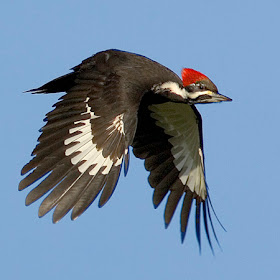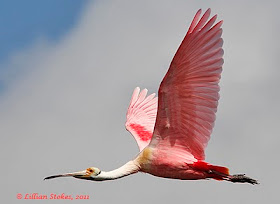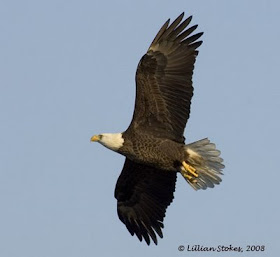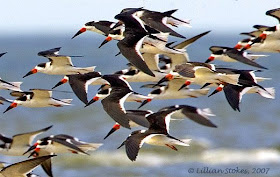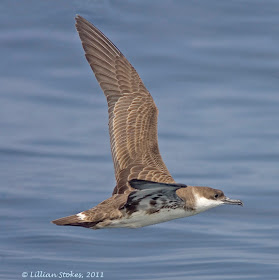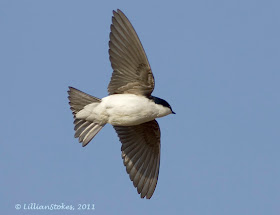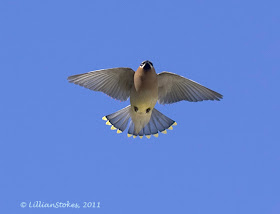Order Now! The New Stokes Field Guide to Birds: Eastern Region, click here.
Order Now! The New Stokes Field Guide to Birds: Western Region, click here.
Announcing 2 new Stokes Guides –
The New Stokes Field Guide to Birds: Eastern Region and
The New Stokes Field Guide to Birds: Western Region – Just Published!
Reviewers are calling them "Jam-packed with some of the best bird photography out there... they provide the most current and up-to-date information on birds"
birdfreak.com
"Written and created with intelligence and exacting care... Expands on their record of excellent books about birds. I was impressed by the depth and authority of the species descriptions... I highly recommend trying one."
10,000 Birds
"Don and Lillian Stokes hit it out of the park with their new... guide"
Thermal Birding
The New Stokes Field Guide to Birds: Eastern and Western Region are the most complete photographic guides to the birds of eastern and western North America ever written. These lighter weight, portable editions are based on our best-selling national guide,
The Stokes Field Guide to the Birds of North America. They feature thousands of stunningly beautiful photos showing all the field marks and every significant plumage of each species and they include the most up-to-date and extensive identification information of any field guide. (Note, these are entirely new books and not the same as the former Stokes Field Guide to Birds eastern and western regions published in 1996.) We are so excited to bring to you these all new, lighter, more portable field guides, just in time for spring migration. These guides are what you have been asking for. You can pre-order them now!
They have multiple beautiful photos per species.
These are more portable guides.
The New Stokes Field Guide to Birds: Eastern Region is less than an inch thick. Size is 5.6 x 8.5 x .08 inches, Pages: 513, Photos: 2,200+
The New Stokes Field Guide to Birds: Western Region is an inch thick. Size is 5.6 x 8.5 x 1 inch, Pages: 593, Photos: 2,400+
Here they are on top of our red, national guide The Stokes Field Guide to the Birds of North America
These guides include everything birders want,
- Over 2,200 gorgeous photos in the eastern region and 2,400 photos in the western region, carefully chosen for each species to show all distinct field marks and plumages including, male, female, summer, winter, recognizable ages, morphs, important subspecies, and birds in flight.
- More photos per species for hard to identify birds. Difficult species, such as sparrows and flycatchers are shown from every important angle.
- The most complete and extensive identification text of any North American field guide, either photographic or drawn.
- Handy Quick Alphabetical Index inside the front cover.
- The only North American field guides to include complete information on all subspecies and hybrids.
- Special sections with identification tips on identifying more difficult groups of birds.
- Cutting edge emphasis on quantitative shape as a way to fast-forward bird identification.
- The newest scientific names.
- Habitat descriptions.
- Special help for identifying birds in flight through important clues to behavior, plumage, and shape.
- Detailed descriptions of songs and calls.
- The newest range maps.
Frequently Asked Questions,
1. Why did you write these new guides?
We wanted to give people lighter, more portable guides to take into the field, so we split our larger national guide, The Stokes Field Guide to the Birds of North America, into two regional guides, The New Stokes Field Guide to Birds: Eastern Region and The New Stokes Field Guide to Birds: Western Region. Plus, each of these new regional guides contains only those species found in the respective halves of North America, so you have less species to look through when trying to identify a bird. This makes it easier to identify birds in your area.
2. Are they the same as your national guide, The Stokes Field Guide to the Birds of North America?
Yes, they contain all of same features as our national guide, the wonderful photos, layout, incredible information, and unique features that have made our national guide a best-seller. We have added a few new photos and the latest scientific name changes as of their writing. Best of all, these regional guides are much lighter and more portable. To further this end, we have omitted the extreme rarities from these regional guides (all of which are in our national guide) and included just the species you are most likely to see in the eastern or western regions of the country. For those who want all of the extreme rarities, we recommend getting our larger national guide, The Stokes Field Guide to the Birds of North America, which was published in 2010.
3. Why should I buy these guides?
These guides are the most complete and up-to-date regional field guides available. They have stunningly beautiful, carefully chosen photos, with multiple photos per species which show all the important field marks and plumages of each species. We give more, not less, photos for the difficult species. The information is the most complete of any field guide available and hailed for it's incredible accuracy. Photos are the new standard in bird identification and our photos are correct, labeled as to
age, sex, season, morph, subspecies, location and month of the photo. We give detailed and complete information on subspecies and hybrids, which no other guide does. Our layout, with photos at the top and no distractions, allows you to look closely at the real bird and all of its variations while trying to ID it. In summary, in terms of quality, information, and user-friendly layout, there are no other guides like these available. If you already own our national guide, you will want to get these new, portable, regional guides to take into the field with you.
4. Which area is covered by each region, so I will know which one to get depending on where I live?
The dividing line between the coverage of the two regional guides is a straight line from the eastern two-thirds of TX up through Canada, including most of OK, KS, NE, SD and ND. The New Stokes Field Guide to Birds: Eastern Region covers species found east of that line and The New Stokes Field Guide to Birds: Western Region covers species found west of that line. There is a map on the back of each guide showing which area of North America it covers.
5. Are these the same as your previous Stokes Field Guide to Birds: Eastern Region and Western Region published in 1996?
No, these are completely new and much more extensive identification guides with all new photos and information. That's why they are called The NEW Stokes Field Guide to Birds: Eastern and Western Region. Our previous guides have not been updated since 1996. They are not being republished and will go out of print. The previous guides had less information and photos. They did have some behavioral and nesting information.
6. When can I get your new guides?
The publication date for
The New Stokes Field Guide to Birds: Eastern Region and
The New Stokes Field Guide to Birds: Western Region is March 26, 2013, which means it will be fully available all across the country by then. You can pre-order it online now or get it from your local bookseller.
Praise for The Stokes Field Guide to Birds of North America,
The Stokes Field Guide to Birds of North America is "Unequivocally the most spectacular compendium of North American bird identification photographs ever assembled between two covers...this volume significantly resets the bar for North American field guides."
Wayne Peterson, Massachusetts Audubon Society


































